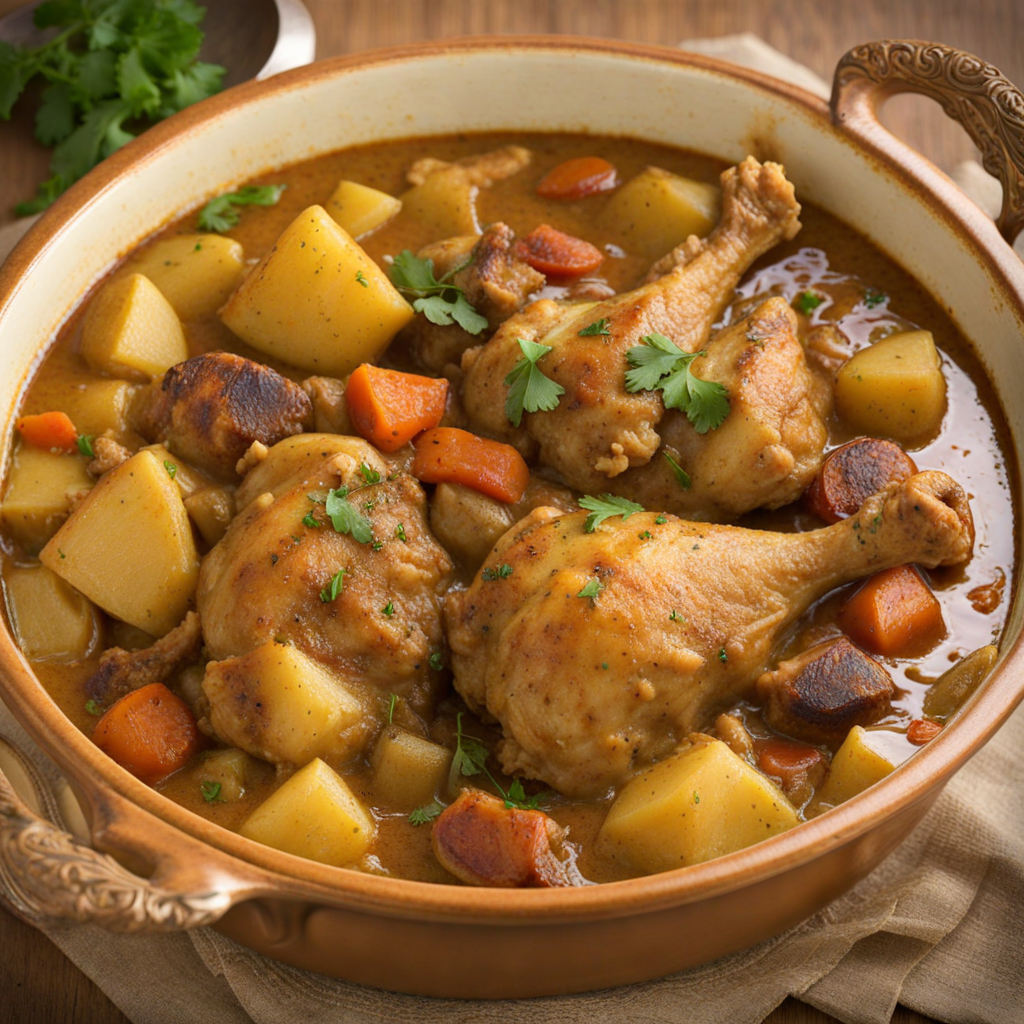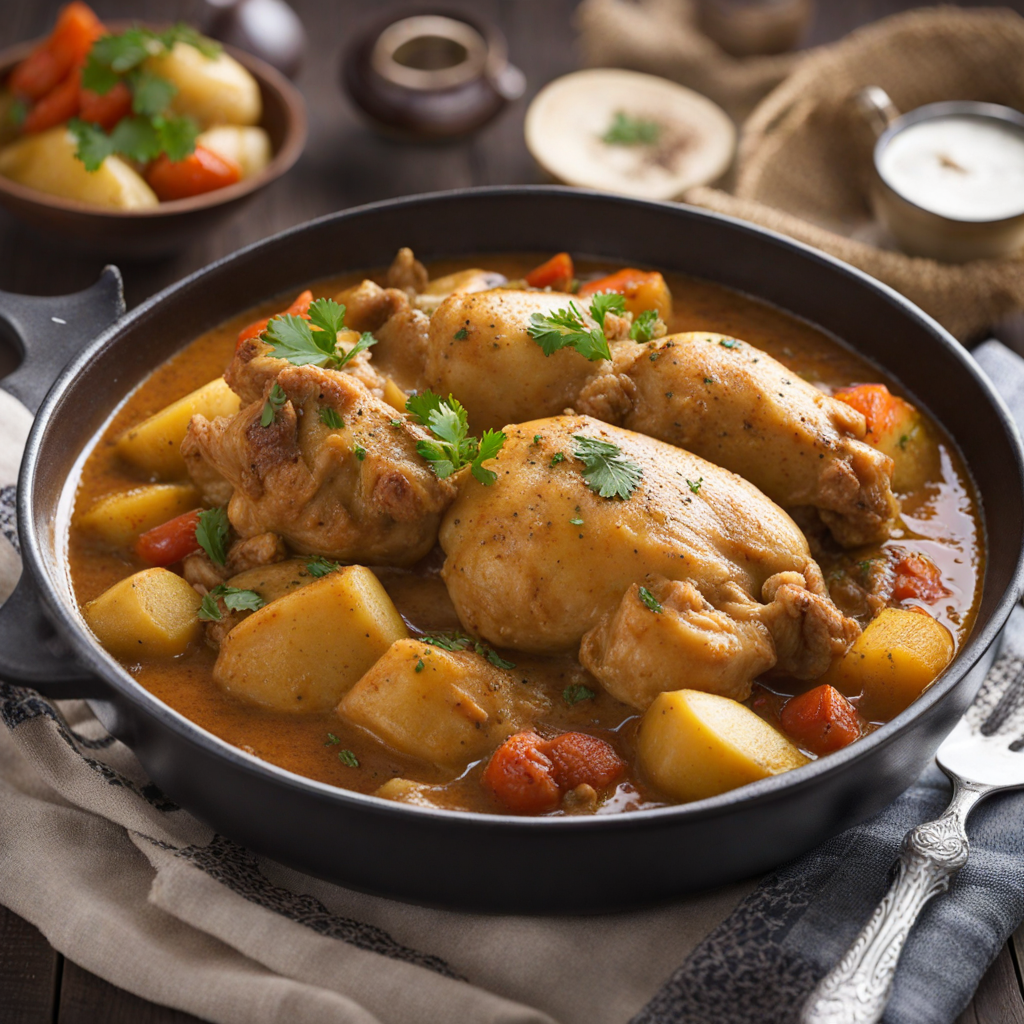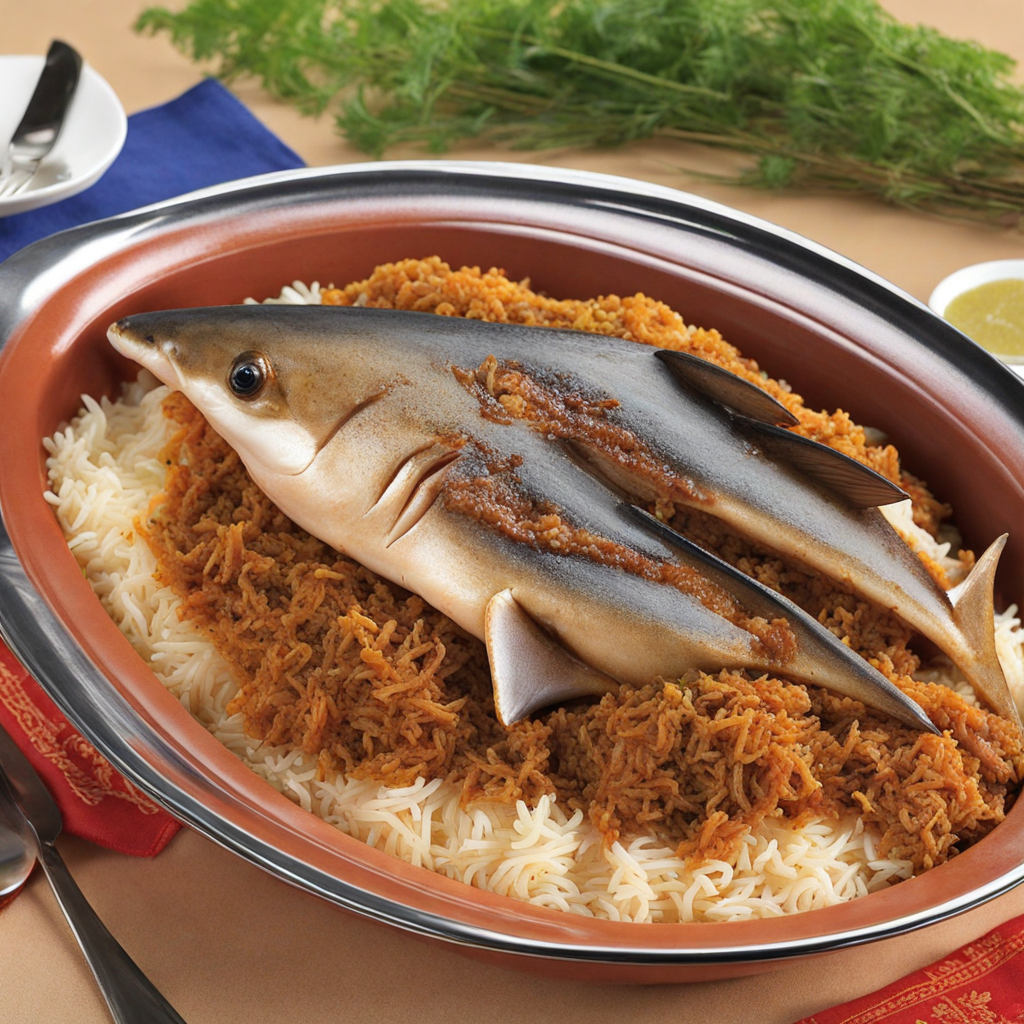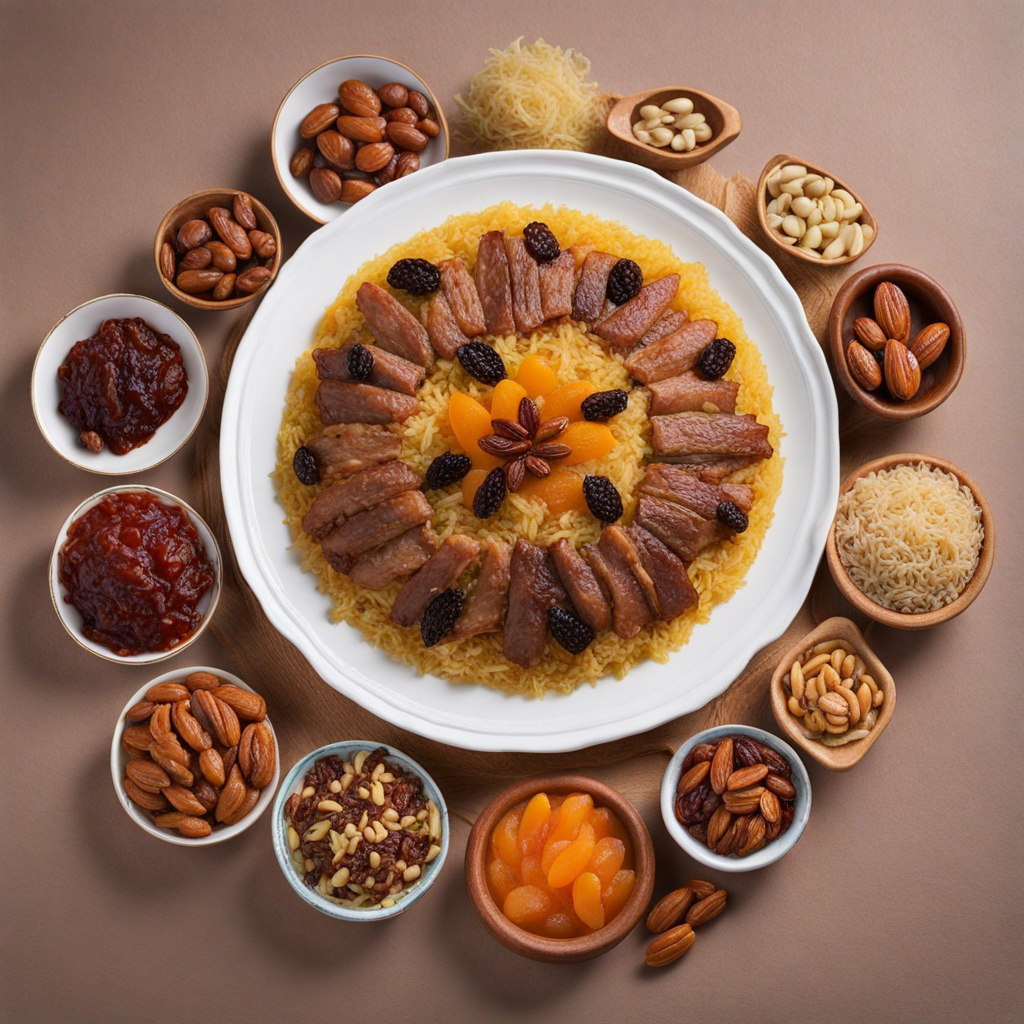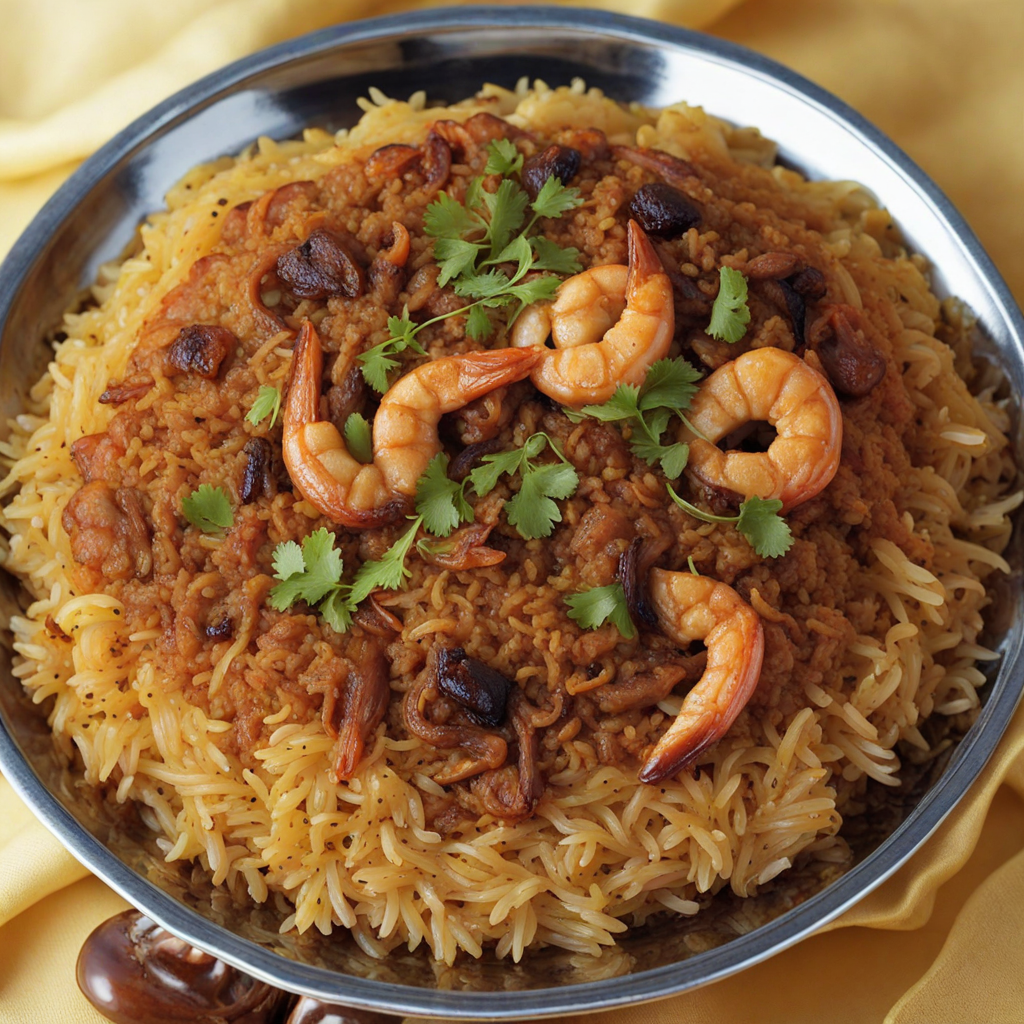Chicken Saloona
Chicken Saloona is a delightful Omani dish that beautifully showcases the rich flavors and spices of the region. At its core, this dish features tender pieces of chicken simmered to perfection in a fragrant sauce made from a blend of spices such as cumin, coriander, turmeric, and cardamom. The vibrant colors of the spices create a visually appealing dish that is as inviting as it is delicious. The sauce is typically enhanced with fresh tomatoes, onions, and green chilies, giving it a hearty and robust flavor profile that tantalizes the taste buds. What sets Chicken Saloona apart is its unique balance of flavors. The heat from the spices is complemented by the sweetness of caramelized onions and tomatoes, while the chicken absorbs the aromatic essence of the spices during the slow-cooking process. This results in a dish that is both comforting and satisfying, perfect for sharing with family and friends. Traditionally served with a side of rice or flatbread, Chicken Saloona becomes an integral part of a communal dining experience, inviting everyone to gather around the table and indulge in its warmth. This dish not only represents the culinary traditions of Oman but also reflects the country's hospitality. Enjoying Chicken Saloona is more than just a meal; it is an exploration of flavors that tells a story of culture and community. Each bite offers a glimpse into Omani life, making it a must-try for anyone looking to expand their palate and discover the diverse tastes of Middle Eastern cuisine.
How It Became This Dish
The Culinary Journey of سلونة الدجاج (Salona al-Dajaj): A Dish of Omani Heritage Introduction سلونة الدجاج, or Salona al-Dajaj, is a traditional Omani chicken stew that embodies the rich tapestry of Oman's culinary heritage. This dish is not merely a meal; it is a flavorful representation of the nation’s history, geography, and cultural influences. As we delve into the origins, cultural significance, and evolution of Salona al-Dajaj, we uncover the multifaceted identity of Oman and its people. Origins: A Blend of Influences The origins of Salona al-Dajaj can be traced back to the rural heartlands of Oman, where local communities harnessed the bounty of their land and livestock. Oman's geographical position on the southeastern coast of the Arabian Peninsula has historically made it a crossroads for various cultures. As a result, Omani cuisine is an amalgamation of Bedouin, Persian, Indian, and East African culinary traditions. Historically, chicken was not always a staple protein in Oman. The introduction of poultry farming in the region can be linked to the increasing trade routes established during the 19th century. The abundance of spices and herbs, a hallmark of Omani cooking, was influenced by trade with India and East Africa. Salona al-Dajaj is a perfect reflection of this cultural exchange, as it incorporates an array of spices—such as turmeric, cumin, coriander, and black pepper—alongside local ingredients like tomatoes, onions, and garlic. Cultural Significance Salona al-Dajaj is not merely a dish; it is a symbol of hospitality and community in Omani culture. Like many traditional foods, it is often served during gatherings, celebrations, and family meals. The preparation of Salona al-Dajaj is a communal activity that brings families together, reflecting the importance of unity and togetherness in Omani society. In Oman, meals are often accompanied by the traditional custom of serving coffee (kahwa) and dates, further enhancing the experience of sharing food. The act of eating Salona al-Dajaj is steeped in ritual, where it is typically served with rice, allowing for the flavors of the stew to meld with the grains. As with many Middle Eastern dishes, the communal platter encourages diners to share, fostering bonds and conversations. Ingredients and Preparation Salona al-Dajaj is made with simple yet flavorful ingredients. The chicken is usually marinated with a blend of spices, which may include turmeric for its vibrant color and health benefits, and cumin, which adds warmth and depth. The dish also features tomatoes and onions, which are sautéed to create a rich base for the stew. Garlic and ginger are often included for their aromatic qualities. The cooking process typically involves simmering the chicken with vegetables and spices, allowing the flavors to meld together. The slow cooking technique not only tenderizes the chicken but also infuses the broth with layers of flavor. Some variations of Salona al-Dajaj may include potatoes or carrots, showcasing the adaptability of the dish to incorporate seasonal or readily available ingredients. Evolution Over Time As Oman has evolved, so too has Salona al-Dajaj. The dish has retained its traditional roots while also adapting to the influences of modern culinary practices. In recent years, there has been a growing interest in Omani cuisine, both locally and internationally, leading to a resurgence of traditional dishes like Salona al-Dajaj in restaurants and homes alike. The globalization of food culture has introduced new cooking techniques and ingredients that have found their way into the kitchens of Oman. Contemporary chefs often experiment with Salona al-Dajaj, introducing elements such as coconut milk or different vegetables, which may reflect the influences of Southeast Asian cuisine. This blending of flavors exemplifies the dynamic nature of Omani culinary traditions, demonstrating how they continue to evolve while honoring their heritage. Moreover, the rise of social media and food blogging has helped to popularize Omani cuisine beyond its borders. Recipes for Salona al-Dajaj are shared widely, showcasing the dish to a global audience and sparking interest in Oman’s rich food culture. This visibility has contributed to a renewed pride in traditional dishes, with many young Omanis seeking to reconnect with their culinary roots. Salona al-Dajaj in Contemporary Omani Culture In modern Oman, Salona al-Dajaj remains a staple in both urban and rural households. It is often prepared during the holy month of Ramadan, where families gather to break their fast with hearty and nourishing meals. The communal aspect of sharing Salona al-Dajaj reflects the spirit of togetherness during this significant time of reflection and gratitude. In addition to its role in daily meals, Salona al-Dajaj has also gained a place at ceremonial occasions and weddings, where it is often featured prominently on the menu. The dish's ability to provide comfort and satisfaction makes it a beloved choice for celebrations, further solidifying its status as a culinary icon. Conclusion The history of سلونة الدجاج (Salona al-Dajaj) is a testament to the rich cultural heritage of Oman. From its humble origins rooted in local agriculture to its place as a symbol of hospitality and community, Salona al-Dajaj reflects the diverse influences that have shaped Omani cuisine over the centuries. As it continues to evolve in modern culinary contexts, the dish serves as a bridge between the past and the present, inviting new generations to explore and celebrate the flavors of their heritage. In every bite, Salona al-Dajaj encapsulates the spirit of Oman—its history, traditions, and the enduring bonds of family and community.
You may like
Discover local flavors from Oman


